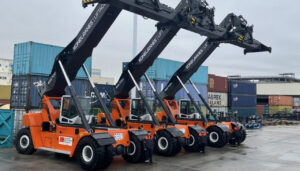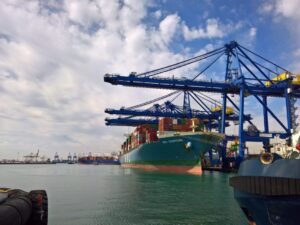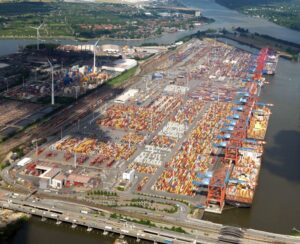Kalmar, ABB and Nokia have successfully conducted industrial trials of 5G technology, leveraging its low-latency capabilities to support time-critical applications and enhance protection and efficiency.
The trials, carried out as part of the Wireless for Verticals (WIVE) research project, have highlighted the first real-world applications of 5G for electricity grid and harbour automation.
Ultra-reliable low-latency communications (URLLC) has been identified as one of the three main uses of 5G, because of its ability to transmit data safely within milliseconds.
To learn more about the transformative potential of 5G and other smart technologies, book a place at Port Technology's Container Terminal Automation Conference – CTAC2019
In the first trial, Nokia and ABB demonstrated how URLLC technology can be applied to protection applications in medium-voltage distribution networks.
According to a statement, it is imperative that severe faults are cleared immediately to keep the distribution network running, guaranteeing the safety of personnel and avoiding damage to equipment.
Ultimately, the trial confirmed that 5G and URLLC fulfils latency requirements set by protection applications.
View ABB's range of automated and electrical solutions on PTI's supplier directory
The second trial saw Nokia and Kalmar prove the ability of URLLC technology to advance container yard automation, as it allowed for reliable and low-latency messages to be transferred safely.
Petri Hovila, Program Manager at ABB, commented: “Managing power distribution networks with an increasing amount of distributed energy resources and an increasing need of flexibility requires advanced technology for protection, control and monitoring.
“The 5G URLLC technology provides an affordable communication platform for deployment of these advanced technologies. The results of the WIVE project are encouraging for future utility-scale implementation of 5G.”
View Kalmar's automated handling systems for ports and terminals in PTI's Supplier Directory
Pekka Yli-Paunu, Automation Research Director at Kalmar, said: “Network slicing in 5G networks brings a higher level of predictability and control for our safety-related applications.
“5G connections should work at the same level of reliability, latency, and bandwidth as cables and its management should be simple enough.”
Rajeev Suri keynote on ‘Changing the world in a world of change' at #WoC18: “I believe the work Nokia does – what technology companies do – can make the world a better, healthier, fairer, and more #sustainable place.” @ngpcapital https://t.co/H4yWcQ3tHr #SDGs pic.twitter.com/u7Zeqijh7y
— Nokia (@nokia) November 14, 2018
Mikko Uusitalo, Nokia’s Head of Wireless Advanced Technologies Research, added: “Industry collaboration is essential in fostering innovation around 5G and for enabling different industries to take full advantage of the promises of 5G, especially the low latency combined with high reliability.
“The WIVE project has provided us with greater insight into the requirements and opportunities for experimentation to test our solutions.”










